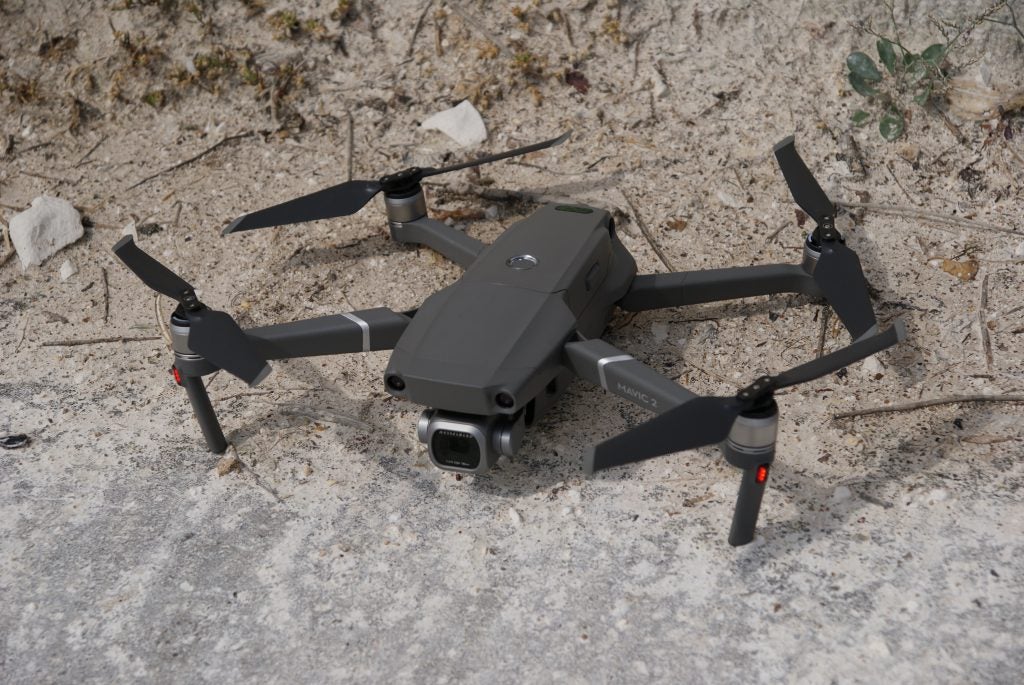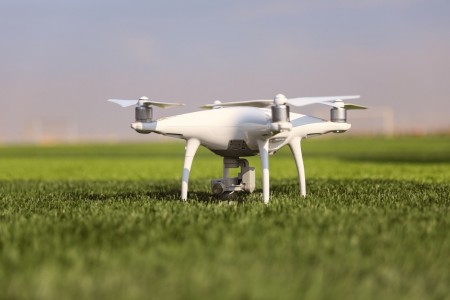
A Bio-hybrid drone was used with an Electroantenogram device (EAG). To create a drone capable of detecting odors, The device is equipped with a tilt sensor and the flight controller sets the drone at an angle of 270 degrees to the odor source. To determine the maximum concentration of the smell, we used a spiral surge algorithm. The drone flew towards the source of the odor to collect data.
Bio-hybrid drone
A sensor is needed to detect airborne volatile substances. A bio-hybrid drone with an antenna that detects chemical plumes has an advantage over current robotic systems: it can detect both chemical sources and their locations. Its odorant-sensing antenna, as seen in Figure 4B, detects a wide range of chemicals. These sensors not only make drones safer to fly but also offer excellent proof-of-concept for the localization and chemical detection of odor sources.
Electroantennogram (EAG) device
EAG recording can be a complicated science. A drone equipped with a sensor is no exception. There are many sources for noise. These include biological noise, external interference and drifting signals. An easy way to avoid noise is to use an EAG-responsive reference compound. This signal can be used to normalize recorded data. Conventional EAG devices use glass pipette-electrodes. However, the latest design incorporates an electrically conductive jelly to replace the wires. This device is integrated with a first amplifier stage to reduce the amount of noise.

Tilt sensor
A drone equipped with a tilt sensor can provide input to the flight control system. This is vital for applications where stability is critical. A drone equipped with a tilt sensor uses accelerometers and gyroscopes to detect tiny movements. This technology can also apply to other types of moving objects such cars. This is how it works. Trigonometry formulas can be used to calculate the tilt angle of the drone.
Convolutional neural network algorithm for odor source localization
Convolutional neuronet algorithm for smell-source localization using a drone with sensor was published in a recent paper. It describes the first step towards using this method of locating odors sources. This method is based on information-driven principles and outperforms systematic sampling. It speeds up the identification of source parameters. Shannon's law of entropy emphasizes how important information is in the search process. This leads to an information-driven strategy for planning a path. This replaces the binary sensing model that assumes a fixed distribution. The algorithm maximizes the likelihood of detection and models the odor encounters at any given location as a random variable using a Poisson distribution.
Comparison of small drones and gas/biosensors
Research efforts are shifting towards developing odorant biosensors, as small drones are becoming more common for environmental monitoring. Drones can be low-cost, autonomous aerial vehicles that can perform many tasks in environmental monitoring. Both the development and use of an autonomous drone with an aroma biosensor is a major challenge. There are several published papers on the feasibility and use of small drones to monitor such things, including one by J. McGlone, J. Paneque-Galvez, among others.

FAQ
Where can I find a drone for sale?
There are many types of drones available online. Some people prefer buying their drones through Amazon, eBay, or Walmart. Others choose to purchase their drones directly from manufacturers.
Can I fly my drone at my local park?
Yes, drones can be flown in parks around the world. Due to safety concerns, certain countries don't allow you to fly drones in parks. You can fly drones legally in these places.
Is it a crime to fly drones?
Yes, it is illegal to fly drones in some countries like Australia, Canada and New Zealand. It is legal in countries such as France, Italy Netherlands, Poland and Russia.
What are the rules and regulations for drones operation?
Register your drone with the FAA. The registration process requires you to provide information about your device, such as its weight, dimensions, battery capacity, operating frequency, and battery life. A FAA identification number is also required.
Are Drones Banned Where?
The FAA has banned drones from flying near airports, stadiums, sporting events, nuclear power plants, hospitals, prisons, and other restricted areas. However, they do allow them to fly at night using GPS technology.
How do you travel with a drone?
Drones are becoming more and more popular for personal and professional use. Drones are used for filming, photography, aerial mapping, search and rescue, as well as other purposes. New regulations were approved by the FAA, which includes requirements for registration, licensing pilot training and insurance. These changes will help ensure that drones stay safe for all.
What is the difference in a quadcopter from a hexacopter.
Quadcopters are four-rotor helicopters that fly like traditional helicopters. The quadcopter has four independent rotors. The quadcopter's quadcopter counterpart, the hexacopter, has six instead of four. Hexacopters can be more stable and maneuverable that quadcopters.
Statistics
- According to ZipRecruiter, the minimum hourly wage of drone pilots is $20. (thedroneu.com)
- With the top 10% making over $100/h and the bottom 10% making as low as $10/h. (dronesgator.com)
- According to Indeed, a drone pilot gets paid $25.73 per hour on average in the US. (dronesgator.com)
External Links
How To
How to Fly Drones With Beginners
A drone is an unmanned aerial vehicle that can be remotely controlled and used for surveillance, aerial photography, film production, research, and other hobby purposes. Drone technology has been around since World War II. DJI's Phantom quadcopters became commercially available in 2010. Many types of drones have been made available since then, from beginner-friendly models such as the Parrot AR Drone 2.0, to high-end multi-rotor craft such as the DJI Mavic Pro.
There are several ways to fly a drone, including;
-
Remote control - This method uses a control device attached to your hand, which enables you to steer the drone through its flight path. There are two main types: Joysticks (like a radio), and On/Off switches (like an alarm clock).
-
Manual Control – This allows remote operation of the drone via GPS coordinates using a smartphone application. The app will give you instructions.
-
Autonomous Flying - This allows the drone to take over all of the piloting duties. It basically flies autonomously without any human intervention. The drone must be equipped with a camera and sensors that can capture images and data in order to fly autonomously.
-
Triggered Flight: This is similar in concept to manual control. The pilot manually creates a route and the drone then follows it until it reaches that endpoint. Once the programmed route has been completed, the drone returns to the base automatically.
-
Landing Gear: Some drones have landing gear that allows them safely to land in case they lose power or run low on battery.
-
Goggles: Some pilots use goggles in order to protect themselves against debris when operating.
-
Camera – Some drones have cameras, which allow you to take photos or videos from up high.
-
Obstacles: Some drones are equipped with obstacle avoidance systems to prevent them from hitting obstacles.
-
Speed - Some drones can travel at speeds over 40 mph.
-
Battery Life – Most drones will last 20 minutes to three hours depending on how powerful they are.
-
Some drones are capable of traveling up to 30 miles depending upon their make and model.
-
Power source - Not all drones can use an external power source. Others can run on internal batteries.
-
Weight - Some drones have a weight of less than 1 pound and others weigh 4 lbs.
-
Size - Drones come in many sizes, from small gadgets that fit in one's hands to large craft that weigh more than 50 lbs.
-
Price - Drones come in a variety of price categories, including high-end models which can run into the thousands and low-cost options that can start at $100.